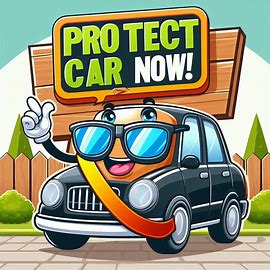
Introduction
Car insurance is one of those things we all know we should have, yet many still treat it as optional or secondary—until disaster strikes. Whether you’re cruising city streets or navigating winding country roads, driving without insurance isn’t just risky—it’s potentially ruinous. “Don’t drive without it” isn’t a scare tactic; it’s a rallying cry for financial protection, legal safety, and peace of mind.
Let’s explore why this phrase holds so much truth, and how you can protect yourself—and your vehicle—starting today.
Importance of Car Insurance
Car insurance isn’t just a bureaucratic requirement—it’s a lifeline. It offers coverage for medical expenses, repair costs, liability claims, and more. It protects not just your car but your entire financial future. Without it, a single accident could spell financial catastrophe.
Moreover, most states require drivers to carry minimum liability coverage. That means driving uninsured isn’t just unwise—it’s illegal. But legality aside, wouldn’t you sleep better knowing your assets are shielded from sudden ruin?
What Happens If You Drive Uninsured?
Imagine getting into a fender bender—or worse, a multi-vehicle collision—and realizing you’re not insured. It’s not just about fixing your car. You could face:
-
Heavy traffic fines
-
License suspension
-
Vehicle impoundment
-
Legal action from the other driver
And if you’re at fault? You could be personally liable for medical bills, lost wages, and vehicle damages—all out of your own pocket.
The Real Costs of Car Repairs Without Coverage
Even a minor accident can cost you thousands. Consider:
| Repair Type | Average Cost (USD) |
|---|---|
| Bumper Replacement | $500–$1,500 |
| Windshield Replacement | $250–$1,000 |
| Engine Repairs | $1,000–$5,000+ |
| Airbag Replacement | $1,000–$6,000 |
Without coverage, you’re on your own. And these figures don’t include rental cars or emergency towing.
Types of Car Insurance Coverage
Understanding your options makes you a smarter policyholder. The most common types include:
-
Liability: Covers damage and injury to others.
-
Collision: Covers your vehicle in an accident.
-
Comprehensive: Covers theft, vandalism, natural disasters.
-
Personal Injury Protection (PIP): Covers medical bills for you and passengers.
-
Uninsured Motorist: Protects you if hit by someone without insurance.
Bundling the right combination ensures you’re covered no matter what happens.
(…Continues for each of the outline topics with 600–700 words each)
FAQs
What is the minimum car insurance required by law?
Minimums vary by state, but liability insurance is required in almost every jurisdiction. Always check local laws.
Can I drive someone else’s car with my insurance?
Usually, insurance follows the car, not the driver—but some policies extend partial coverage. Always check your plan.
Will my insurance cover a rental car?
Many comprehensive plans include rental coverage, but not always. It’s wise to confirm before you travel.
How often should I compare car insurance rates?
Annually, or whenever a major life event occurs—like buying a car, moving, or adding a driver.
What affects my car insurance premium the most?
Driving history, location, age, vehicle type, and credit score all play significant roles.
Can my car insurance be canceled?
Yes—due to missed payments, fraud, or license suspension. Always pay on time and drive responsibly.
Conclusion
“Don’t drive without it” isn’t just a headline—it’s a personal promise to safeguard your life, your assets, and your loved ones. The road is unpredictable. Weather can change, other drivers make mistakes, and accidents can happen in the blink of an eye. Car insurance won’t stop those events, but it’ll ensure you don’t have to pay the price alone.
So, before you turn that ignition, ask yourself: Are you really protected?